A House in The Bijlmer
sculpture
Hip Hop
neighbourhood dynamics
urban vulnerability
This socially engaged sculptural project is part of a longer term research that I am making in the urban context. This bigger project is called “a house for the un-known”. For this project in two cities (Amsterdam Bijlmer and Rio de Janeiro) I worked on the question: how do we live together in the urban context?. This question led to the exploration of the urban space, human and power relations, and of urban cultures. The project in the Bijlmer I called: “A house in the Bijlmer”. If you ask me why I am researching this, I would say that because I am an urban person, and I am intrigued about our human interactions within the city, and in the many contrasts city life shows.
I could work for a long time in this part of Amsterdam, thanks to an artistic residency at BijlmAIR from CBKZuidoost. It took place once in 2018 and another time in 2019. I could there and interact with the neighbours as a local.
The Bijlmer felt for me as a neighbourhood composed of a series of diverse communities and cultures, mostly with a migrant background. The population which has mostly a migrant background has developed here strong formal or informal networks, which support the needs of its members.
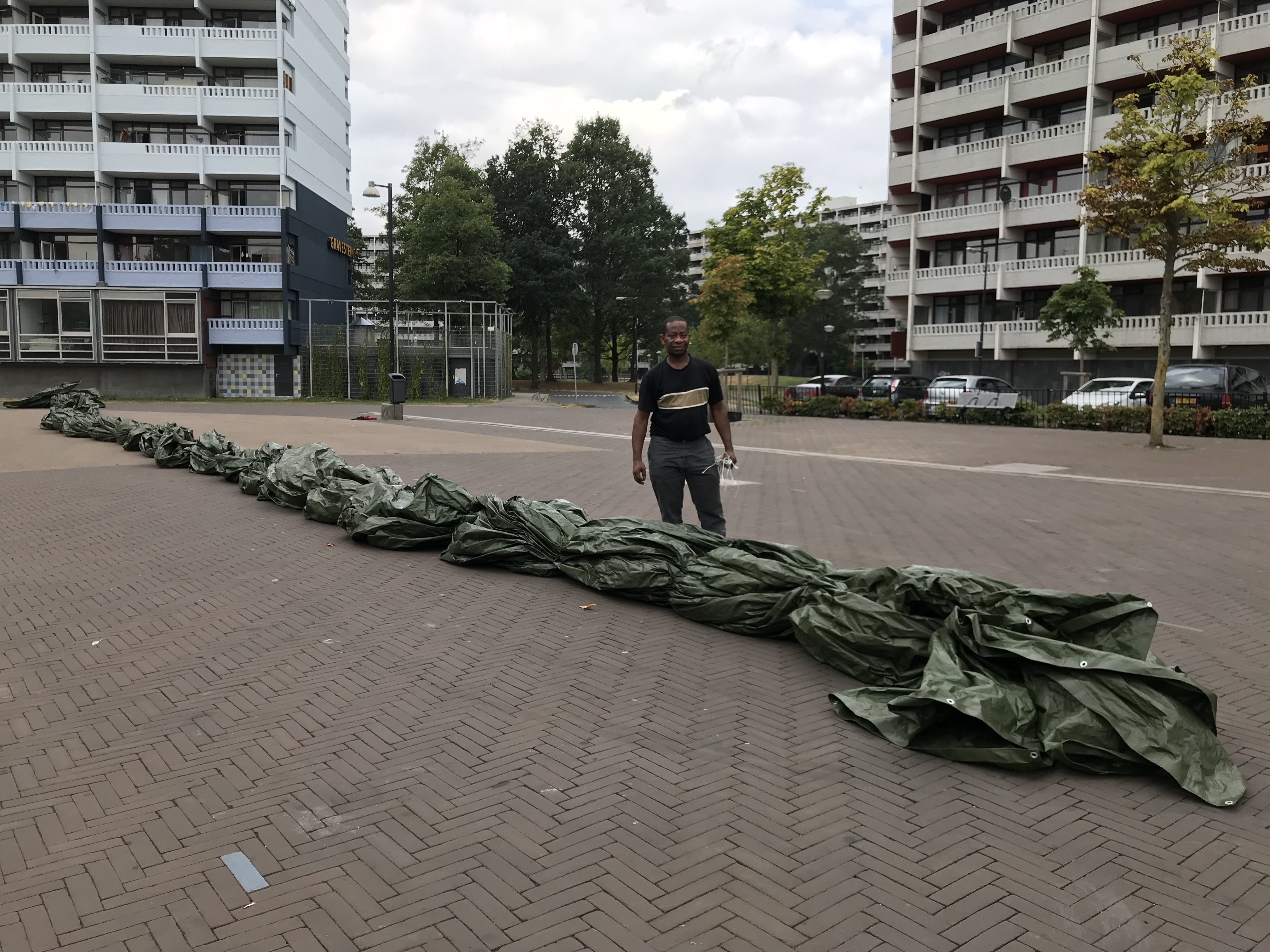
Some support groups are formal, like churches and “neighbourhood houses”, musician groups in artistic studios, migrant communities; or they can be informal groups created at the streets, the diverse businesses, friends and families. These networks are like the veins of the Bijlmer, they provide to new migrants a sense of belonging and a reason for feeling at home. Sometimes celebrations and informal financial support is arranged for the community members. There are many low income households in this part of Amsterdam. There are many single mothers as well. They have created the Bijlmer we know now, they have made it cleaner, “gezelliger”, safer, they have worked hard to raise the brilliant musicians the Bijlmer has brought to the Netherlands. The Bijlmer constitutes the cream of urban culture in the Netherlands, lifestyle, music, street language and the fashion from the Bijlmer is influencing the country.
These observations made visible diverse types of vulnerability within the urban construct, both on urban housing but also of the human body that lives in the Bijlmer. As some social groups are more vulnerable than others, their body becomes more vulnerable as well.
The Bijlmer is becoming every year more like a hipster place to live. The rich culture, the big living spaces, the closeness to the center, the available metro stations, and the newly developed hip shops and festivals are attracting young urban professionals coming from outside the Bijlmer to buy a house in this place of Amsterdam. This process creates a raise in the house prices, which threatens the continuation of the existing networks of Bijlmer dwellers. Because these do not count with the income to afford the newly constructed houses and apartments. Whats more, most of the local young professionals in the Bijlmer still live with their parents. This process described here, is called gentrification. Many Bijlmer dwellers consider gentrification as a process of discrimination, “we know the houses are not made for us”. The biggest complain is that urban housing systems are not supporting local people that gave birth to the vibrant culture that lives in the Bijlmer. Gentrification is in certain way cutting the veins of the Bijlmer, by dislocating members of communities and networks, creating displacements and loneliness for many here. But it also creates a big economical gap between the rich and poor. Young Bijlmer residents feel frustration because of the exclusion they experience. Some get engaged in dangerous illegal activities that make them sometimes face death close to themselves.
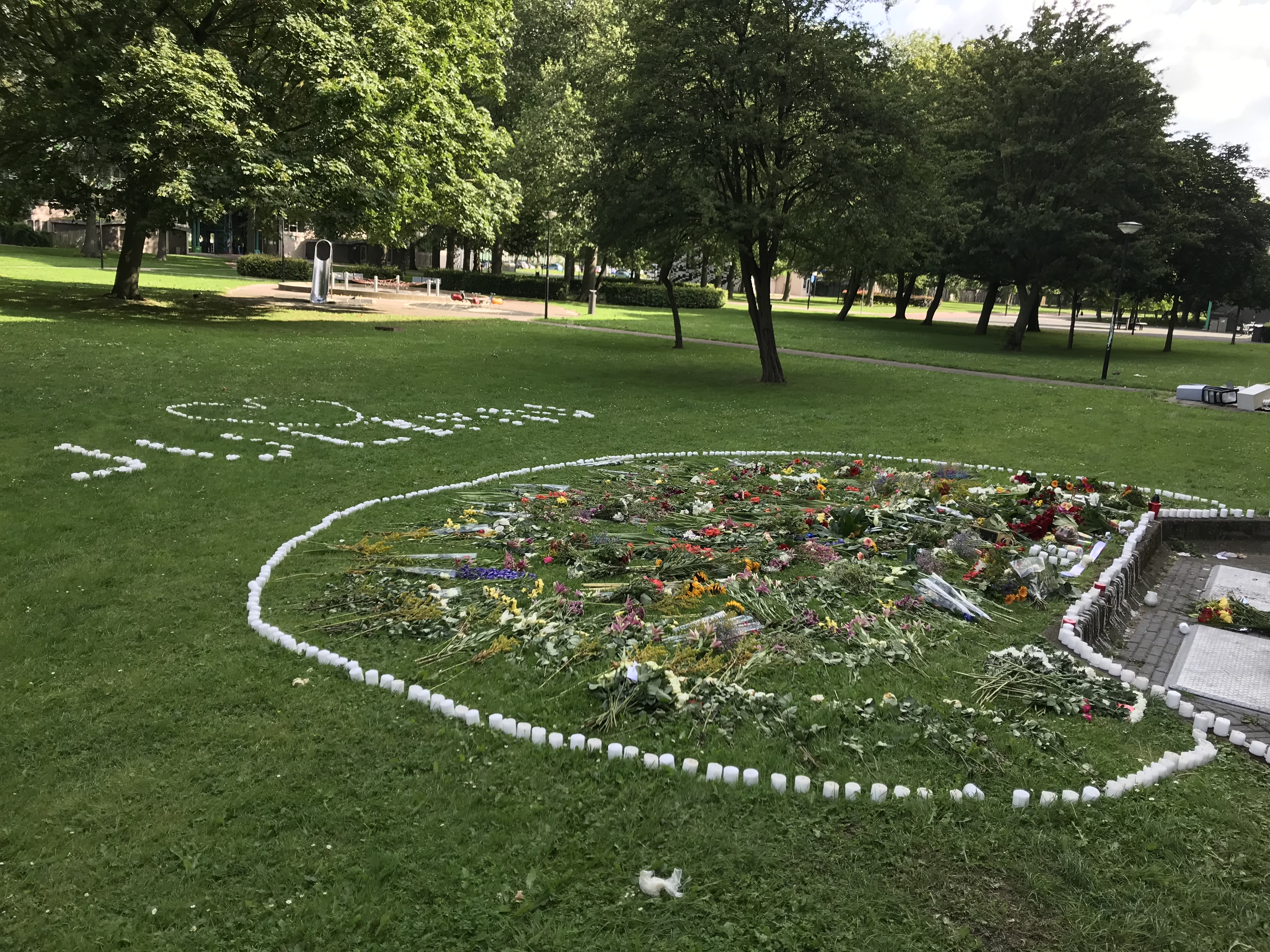
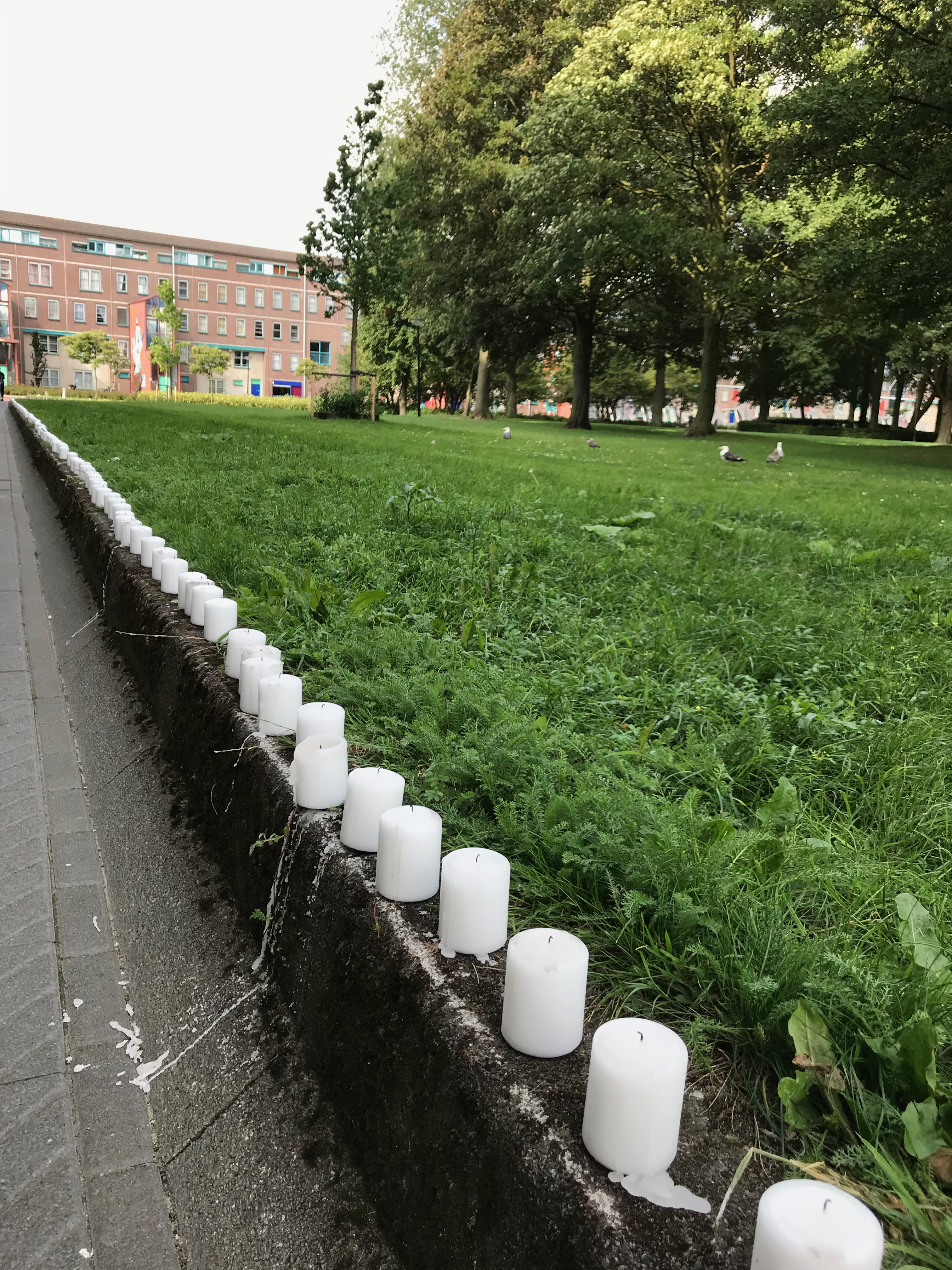
This is why there is a great concern about the increasing violence in the Bijlmer neighbourhoods, killings that happen just because of light disagreements, envy, materialistic dreams that stimulated by the growing capitalistic system. Very little attention is provided to the needs of the young in the Bijlmer. And I dare to say that it is the young body in the Bijlmer, which is most at risk in the streets of Amsterdam city.
"Work development during Artistic Residency at BijlmAIR from CBKZuidoost:"
The project here explored how vulnerability in the urban context is manifested and how it could be expressed through sculptural work, and other mediums. I made good use of my artistic residency at BijlmAIR, to meet people from different Bijlmer neighbourhoods. I interviewed them, interacted with them in ordinary life as a Bijlmer resident. These interviews gave me the chance to understand life inside the house of a Bijlmer family, to understand their life stories, the challenges they have gone through, their successes and their dreams for the future. We also discussed about conviviality in the neighbourhoods, about the diverse cultures that coexist here, from people coming from all over the world. I developed clay portraits of some of them, during the interview.
The following are the activities I planned and developed for my project in the Bijlmer. Which was a sub-project called “A House in the Bijlmer”.
"Workshop Series (October 2019):"
One of the main goals within this project was to research if sculptural workshops could stimulate new social dynamics that will propose more openness among diverse social classes.This is why I decided to develop a workshop series together with a diverse group of neighbours of the Bijlmer.
I spread open calls for these workshops, via networks of buurthuizen and churches, via facebook (mine but also from the organisation No Limit in Gansenhoef and from CBK Zuidoost), via my website and the website of No Limit. CBK did spread the open call to their network via email, reaching around 1915 newsletter readers and 2200 facebook followers.
The workshop series started with a kick off, where we shared our experience of living in the Bijlmer.
Some of the questions that I aimed to get discussed during the kick off meeting were:
How do we live together in the Bijlmer? How are the housing systems influencing life in the neighbourhoods? What about gentrification? What do we think about the new buildings and houses in construction? What if that means that we cannot live here anymore? But also how do we interact with our neighbours in the Bijlmer? What are our dreams for the future in the Bijlmer?
The discussion went about these topics, and deeper into the personal story of each participant. Here we could feel how important is the Bijlmer as a place where many found a refuge, in one way or another. There is a general feeling of being part of something bigger than their own life. This is related to the feeling of community exists, among certain migrant communities.
During the same kick off day, all participants worked on individual creations. It was a diverse result and people had the chance to share their inspiration with each other.
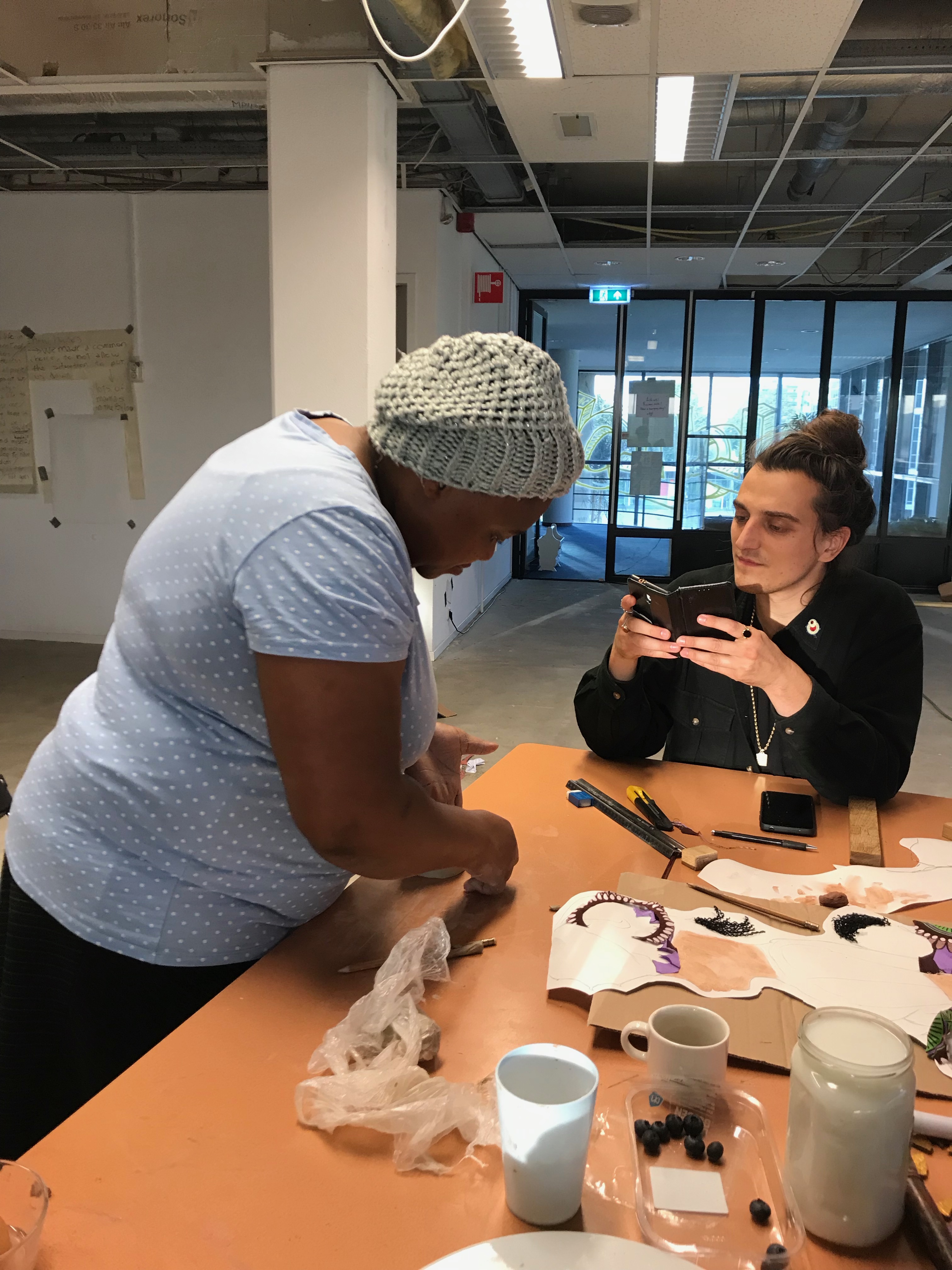
During a second workshop we made gesso moulds of each others heads and faces, in order to use them for ceramic portraits. It was for me the first time I brought my technical knowledge to a group. This was great fun and a good learning moment.
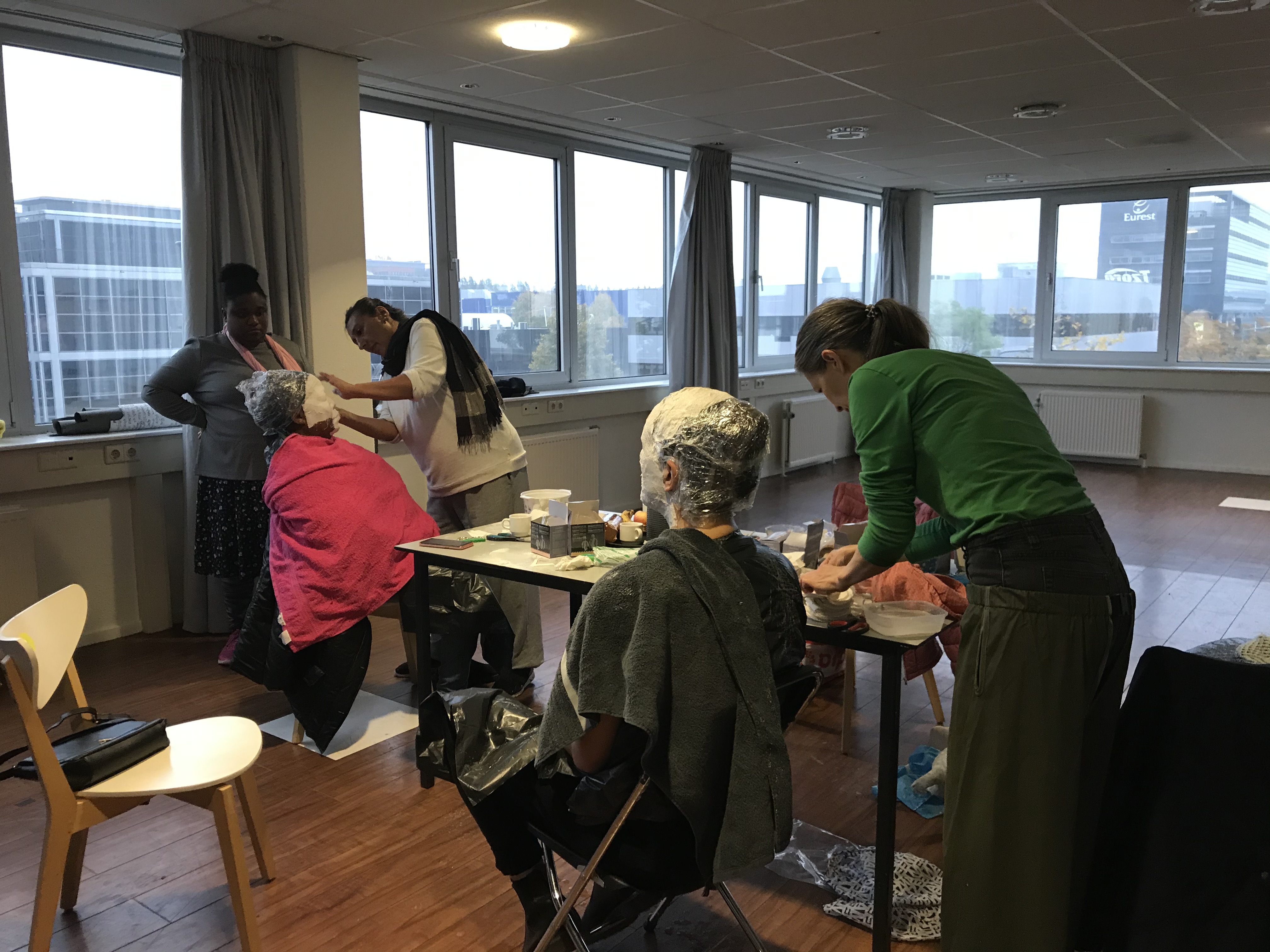
During a third workshop the participants learned to work with clay and develop the clay portraits of each other. During this session discussions were going about deeper existential questions about the coexistence in the city. Issues like religion and tolerance where at the order of the day, like the discussion between a white Jehovah Witness and a Christian woman from a Nigerian church. This diverse groups of people aren’t easily meeting in the neighbourhood, however this project helped to create these interactions.
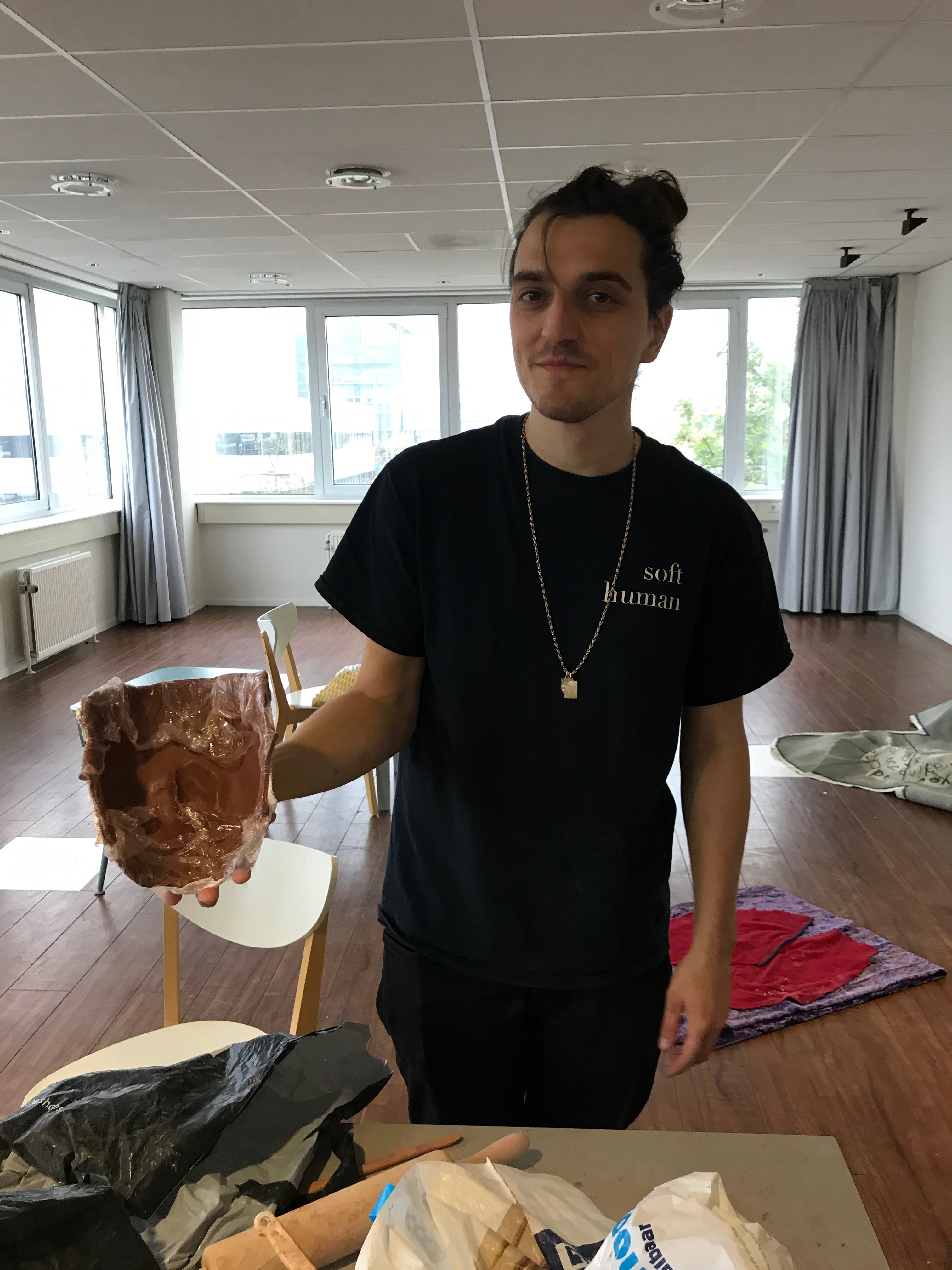
"Collaboration with Chrisjeboy (August-December 2019):"
The pop culture of the city became for me a material for exploring performance. A collaboration with Bijlmer Hip Hop artist Chrisjeboy was part of the process. From him I learned that Hip Hop is a very important culture in the neighbourhood, it determines the identity of young people and creates social connections. He told me about the hard reality of young people that struggle to not fall into criminality, which is usually the fastest way out of poverty. For him is music his salvation, and life path. With it he feels realised and useful, also because he has a leader role in his community. He is well known and respected by many. Younger generations will have to look up to him, and see his example. This is why it can be said that a great responsibility falls into the persona that he creates with his music in this neighbourhood. And this is also why I followed him, to understand his life, his music, his lyrics and inspire my work with it.
Our collaboration became more clear when we understood that we both are fascinated by the vulnerable side of the human being. His songs talk a lot about this vulnerable human, corrupted and degraded because of greed or vanity or betrayal. The texts talk about extreme excitement or disappointments that a “nigga” (a black man) can have, like the hard interactions among peers at the street life, which bring them into a vulnerable position.
But also the negative prejudices from the police against black young people. Which sometimes leads to false accusations of criminality, unfairly judging the innocent people.
By collaborating with Chrisjeboy, an interaction between the fine arts and the popular culture of the city was developed. This was very clear for me in my work interaction with Chrisjeboy, with whom we tried to find the similarities in our thematics, although our artistic talent is expressed in very different ways. But we tried to adapt to each others needs and fascinations.
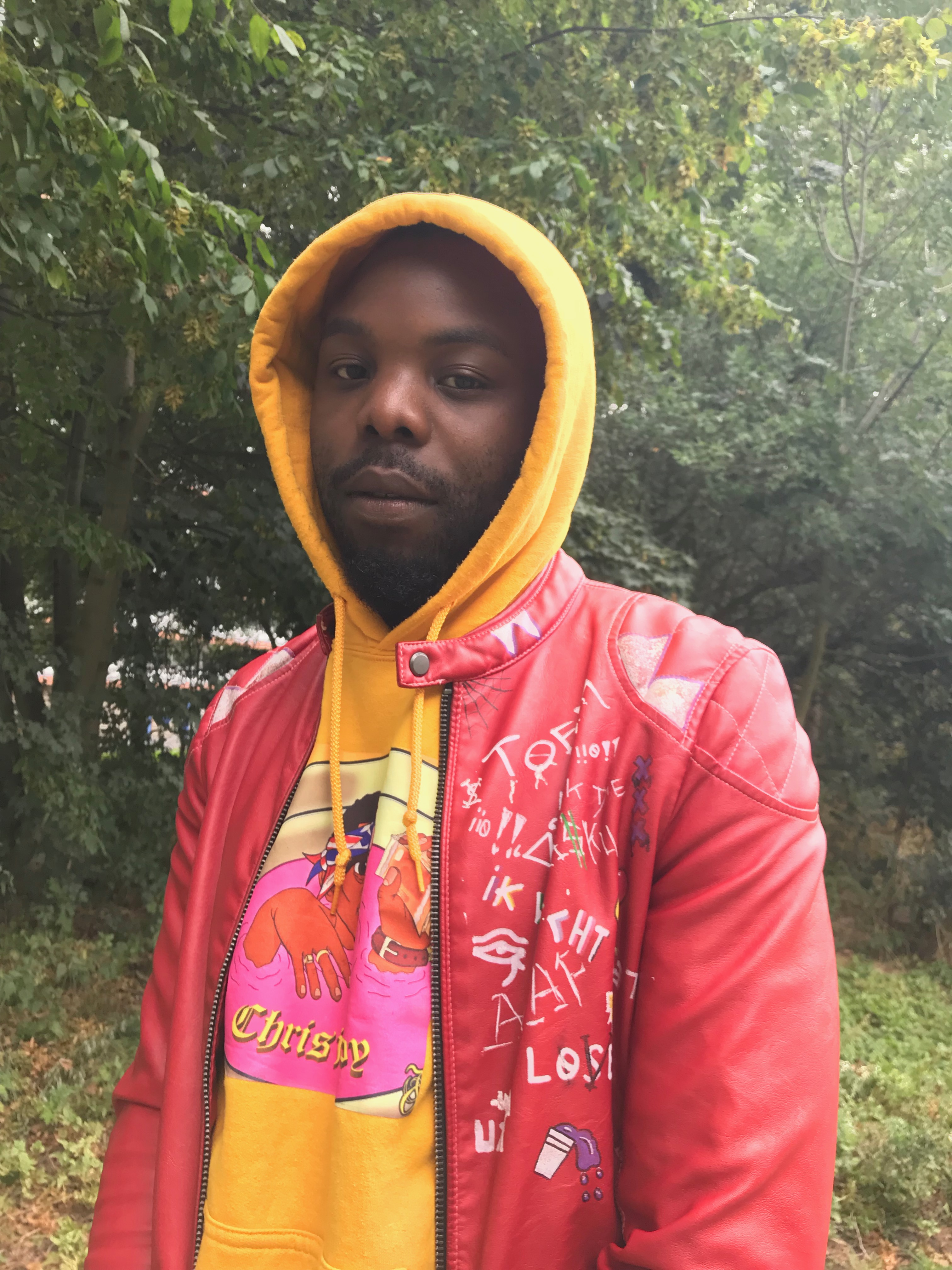
Photo of Chrisjeboy
"Exhibition at CBK Zuidoost (November -December 2019):"
The exhibition was part of Amsterdam Art Weekend and was open for around a month and a half. Invitations reached more that 4000 people, they went through CBKZuidoost network, by email, and all their social media. I also used my social media and email lists to spread the word. The opening was announced at the Amsterdam Art Calendar. The finissage was part of the Open Atelier Route Zuidoost and announced by diverse actors in Zuidoost interested in the publicity for this event. This announcement reached more than 6000 people.
The opening counted around 200 people present, and the finissage around 60 people. The exhibition was visited during the month and a half, by a diverse public which included local people from the Bijlmer, art professionals, cultural producers, social scientists, public servants interested in the thematic. In total there were around 560 visitors.
For this exhibition I presented an installation, and prepared a performance with Chrisjeboy. During the finissage I gave an artist talk with a general evaluation of my project and Chrisjeboy performance took place again.
The installation work I developed and presented is called: “You only have to put clay on it, I have to deal with it all my life”. The materials used to make it are ceramics, engobe, paint, fabric, wood of found furniture from the Bijlmer neighbourhoods. And the size is aproximatelly: 250 x 250x 200 cm.
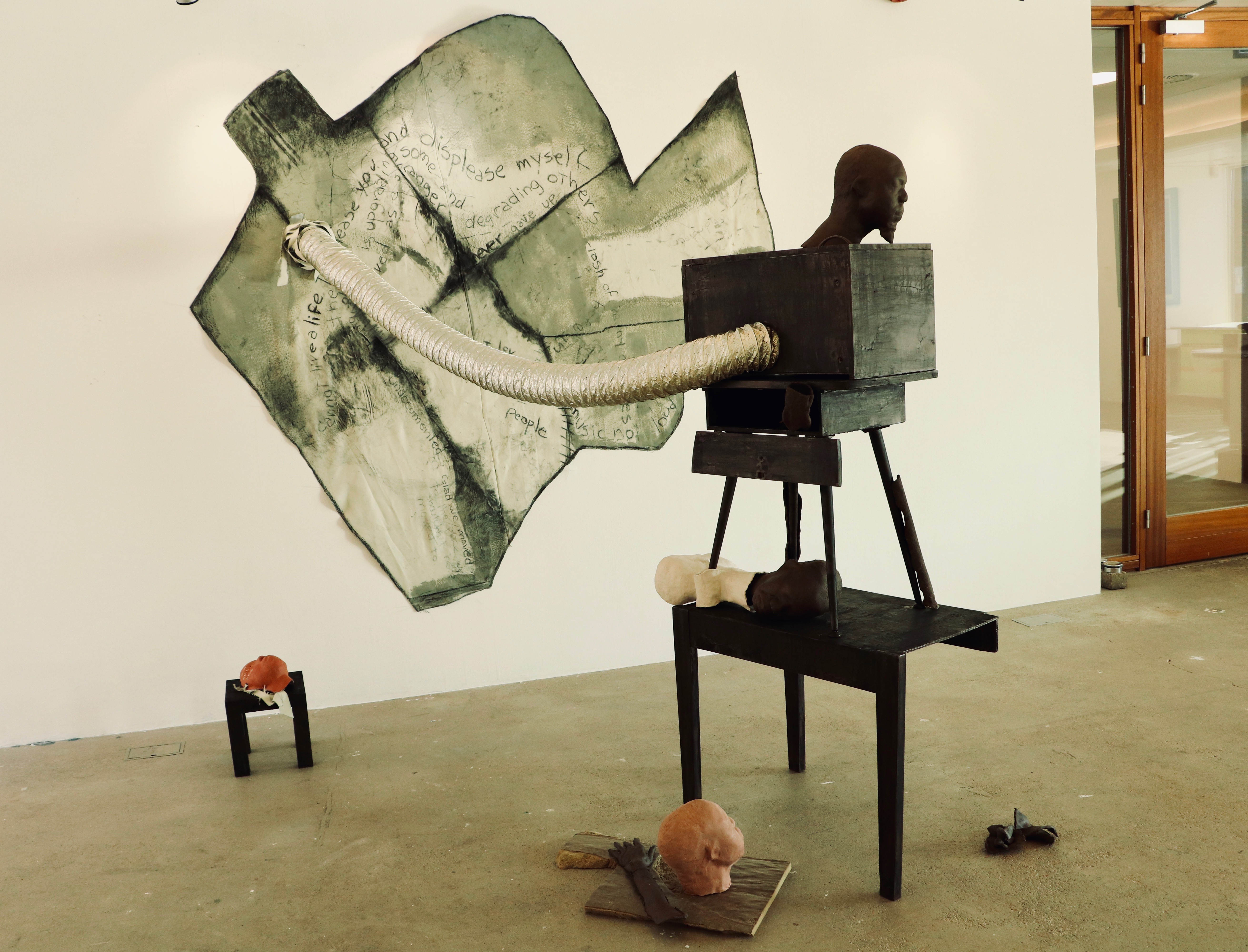
The installation shows a series of ceramic heads, portraits of Bijlmer dwellers living in different neighbourhoods. The portraits are somehow animated by the stories of the portrayed people. This inspired the way the portraits are presented, either passive or active, unbeaten or defeated.
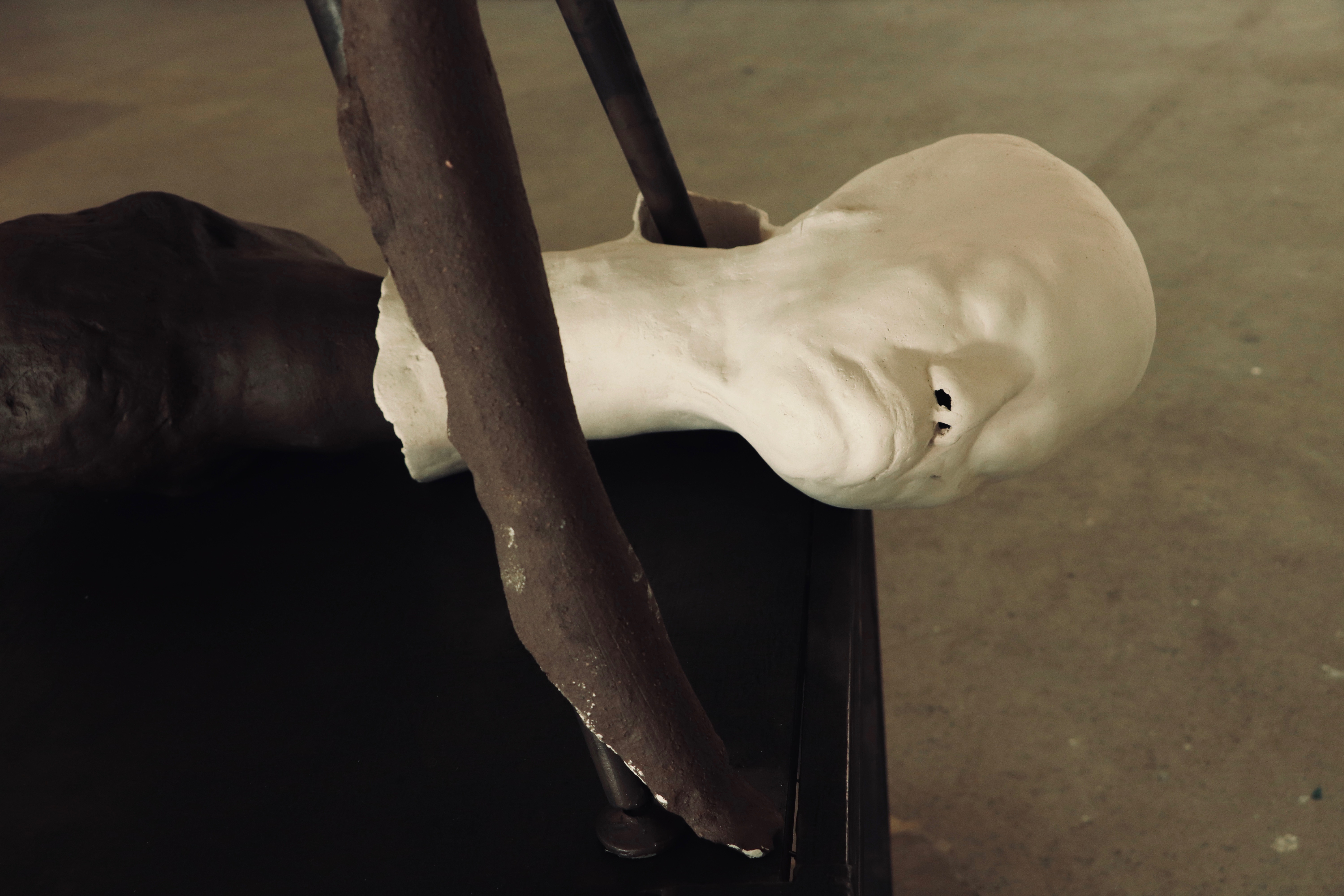
The portraits are balancing themselves within a structure made of found furniture, with which they try to establish a relation. They display different attitudes, finding refuge and balance.
Materials are playing with (in)visibility. The dark brown heads have the same colour as the dark brown wooden structure, becoming camouflaged. This refers to the state of invisibility that some people can achieve within society.
Chrisjeboy, is portrayed three times in the installation. He is presented above the tower as a protector of the territory; below on the floor, vulnerable and unprotected. A third portrait is the mask, which is an instrument for Chrisjeboy’s performance, he used it to enter into a healer character. He performed a healing of the Bijlmer, singing a confronting song, and providing a cathartic effect. Many objects in the installation where used as instruments or symbolic objects for his performance. For more information about the performance, watch the video: https://www.youtube.com/watch?v=0V7tyNw9VxU
People from the Bijlmer were very proud to be portrayed, so they invited other people who normally do not attend exhibitions there to show off their portraits. A neighbourhood leader also showed great interest in the participation of Chrisjeboy as performer, and invited him to become a mentor for children in the neighbourhood.
Some of the objects used in the performance:

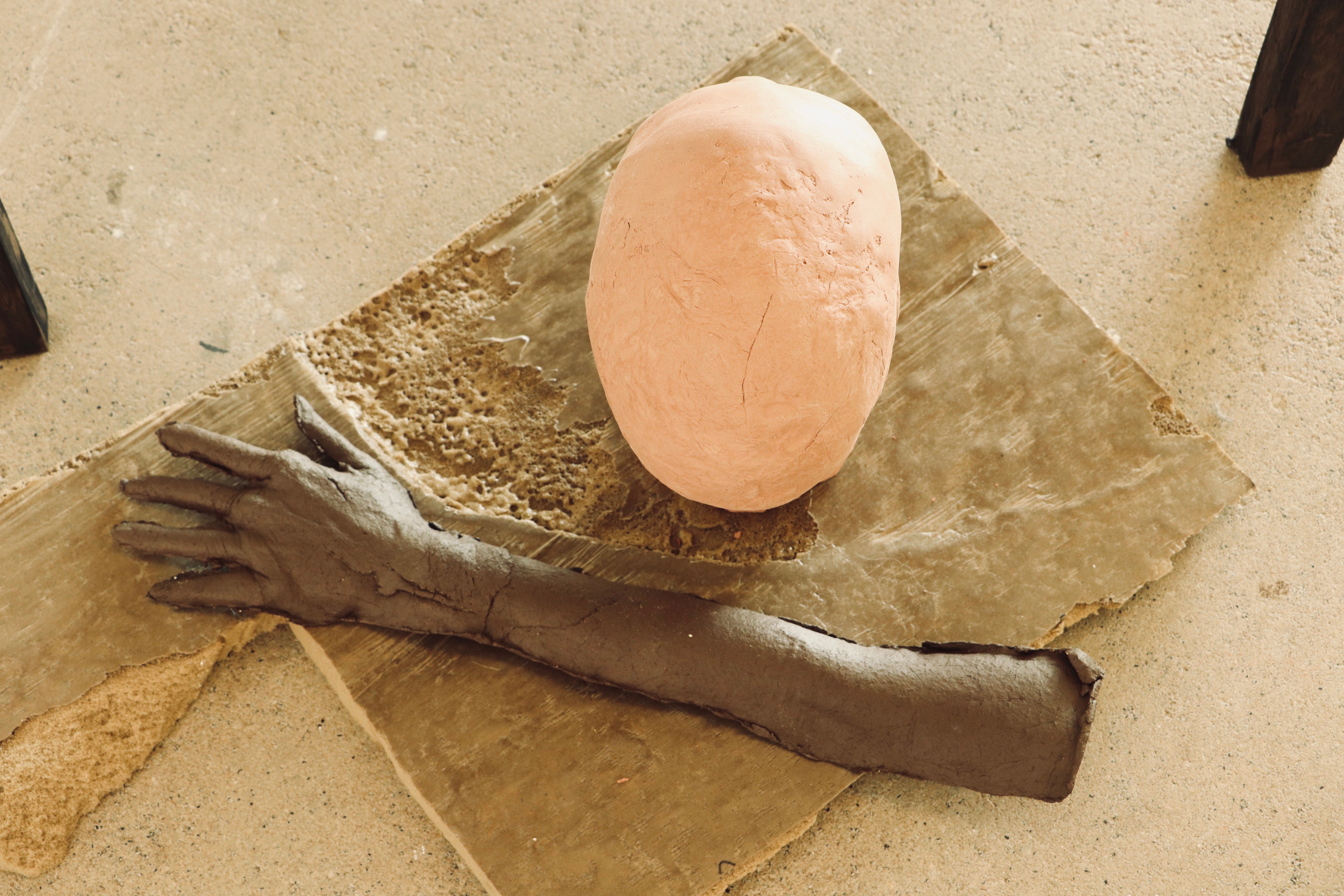
I also gave him performing instructions, a bit to guide the process. But in general I left control, to allow his own power to shine in the process.
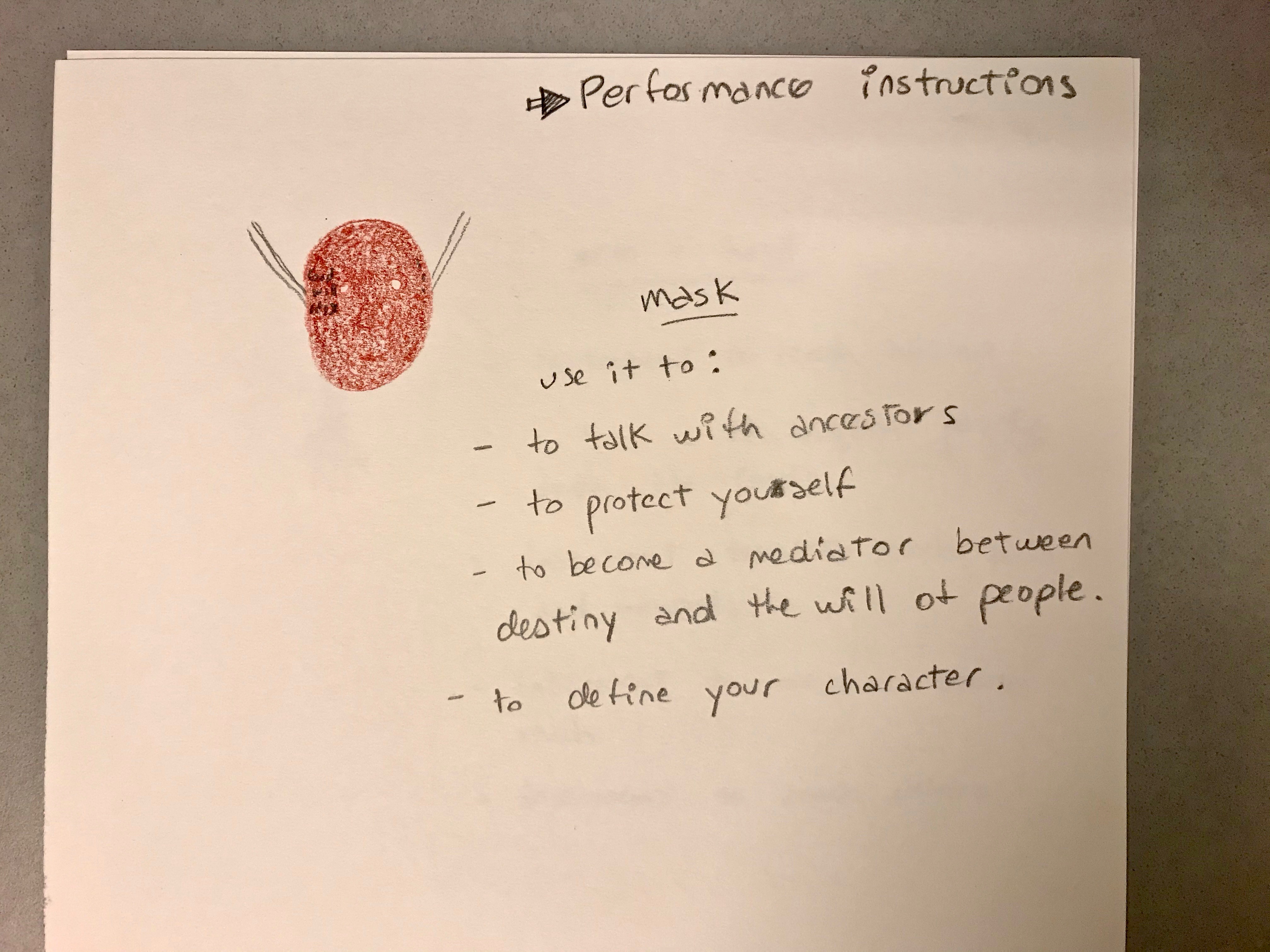
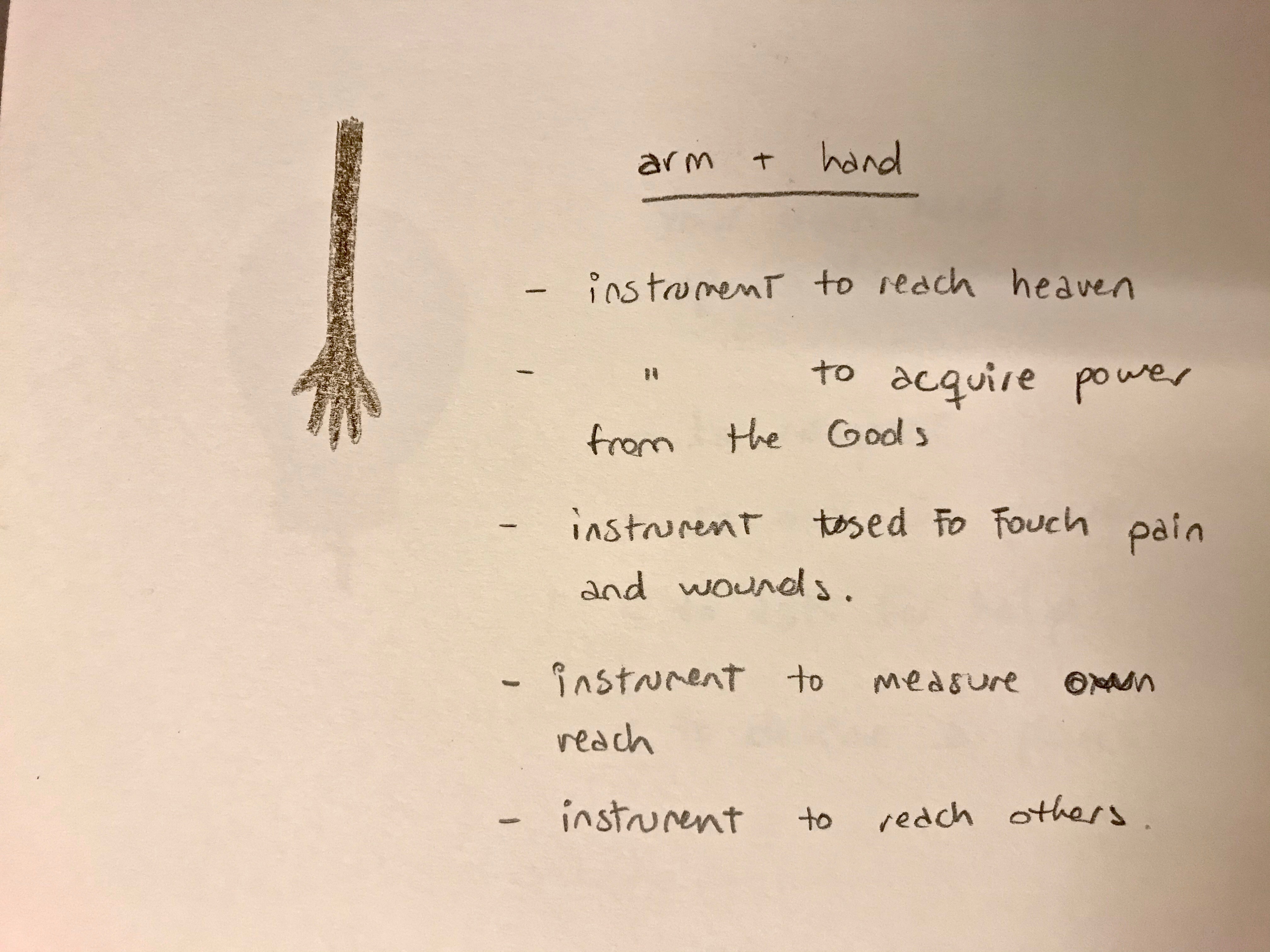
Chrisjeboy’s Song:
in me cup
Lean in me cup
er word niet gestopt
Rode dot jij word gespot
We zijn op je blok we fucken et op
Van 4 tot aan Noord bitch fuck de cops
Ik trek een bom en ze gaat met me mee
Je loevt die bitch en je gaat met dr op date
Geen schelp maar ik ga niet met je inzee
Verse.
Geld op me bord ik eet et op
Je Ik hoef geen lepel bitch geef me die vork
Eventjes binnen toen werd er gestort
Ze komt op bezoek
Zij word geflots
Ik kom voor me ijs je gaat down als ik bos
Geef mama een kop
Mama is trots
Leven was hard laat je denke aan rots
Ik ben op je huid net een puist in je face
Boyki en gang bitch we crashen je feest
Betaal je me niet word gesmoked net als haze
Ik ben de koning maar ik diss geen Kees
Sommige niggers die werde gepakt
Sommige niggers die werden geveegd
Karma die heeft je gepakt
Je kan niet meer tanken want jij word nu fully geraced
Lean in me cup
er word niet gestopt
Rode dot jij word gespot
We zijn op je blok we fucken et op
Van 4 tot aan Noord bitch fuck de cops
Ik trek een bom en ze gaat met me mee
Je loevt die bitch en je gaat met dr op date
Geen schelp maar ik ga niet met je inzee